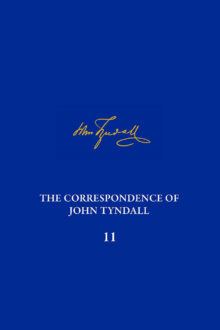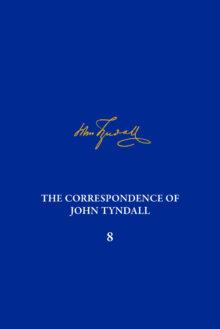
Elizabeth Neswald
Elizabeth Neswald is associate professor for the history of science and technology at Brock University.
The Correspondence of John Tyndall, Volume 11
The Correspondence, January 1869-February 1871
The eleventh volume of The Correspondence of John Tyndall covers the period from January 1869 to the end of February 1871 and contains 427 letters with more than 130 individual correspondents, as well as letters to several newspapers. These years find Tyndall an internationally established scientist with broad influence and feeling increasingly confident in that role. They were highly productive research years, and Tyndall had a wide scope of interests, publishing in scientific journals, popular magazines, and newspapers on a variety of topics, including diamagnetism, germ theory, comets, and atmospheric phenomena. The results of this research were presented in numerous papers and lectures in various venues and complemented by his regular public lecture series and annual Christmas lectures at the Royal Institution.
The Correspondence of John Tyndall, Volume 8
The Correspondence, June 1862-January 1865
The 318 letters in this volume reveal a great deal about Tyndall’s personality, the development of his career, and his role in attempting to better establish science as a respectable and professional enterprise. However, Tyndall was not above controversy, and on more than one occasion he entered public disputes either in defense of his own or a colleagues’ priority claims over scientific discoveries. Perhaps the most dramatic letters—if not those detailing the accounts of his cousin Hector Tyndale’s courageous exploits in the American Civil War—are those relating to Tyndall’s mountaineering adventures. He climbed in pursuit of science, and often with only a guide, making an attempt on the Matterhorn just days after Edward Whymper had failed in the effort. Toward the end of this volume, Tyndall, Thomas Henry Huxley, and others acquired the Reader. Although short-lived, the journal intended to promote and publish the works, society meetings, and correspondence of scientific men, and demonstrates Tyndall’s commitment to the popularization of science and to facilitating communication within the international scientific community.


